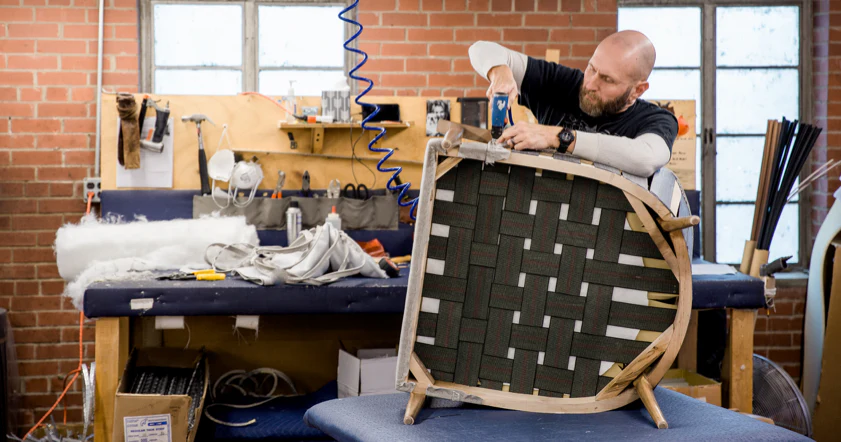Quality craftsmanship represents more than just a finished product; it embodies the skill, dedication, and attention to detail that artisans put into their work. Whether it’s a bespoke piece of furniture, a handcrafted watch, or a custom-made garment, the essence of quality craftsmanship lies in the passion and precision of its creator. This guide explores the multifaceted nature of craftsmanship, revealing why it remains crucial in a world dominated by mass production.
In today’s fast-paced, consumer-driven economy, quality craftsmanship stands out as a beacon of sustainability and ethical consumption. It encourages slower production schedules, higher-quality materials, and end products that last longer than their mass-produced counterparts. For many consumers, investing in quality craftsmanship means participating in a culture that values the longevity and story behind each item.
Across the globe, different cultures celebrate quality craftsmanship in various forms, reflecting their unique histories and traditions. From the fine pottery of Japan to the rich tapestries of Morocco, craftsmanship is a language of cultural expression. Understanding these diverse perspectives enriches our appreciation of handcrafted goods and the communities that create them.
The Historical Evolution of Craftsmanship
Ancient Techniques Still in Practice
Many traditional craftsmanship techniques have been passed down through generations and are still in use today, proving their timeless quality and appeal. Techniques like woodworking, stone carving, and metalworking have evolved but continue to rely on the fundamental principles established centuries ago. These methods have shaped the standards of quality craftsmanship that we strive for today.
The Industrial Revolution and Its Impact
The Industrial Revolution marked a significant shift in production methods, moving from handcrafted to machine-made. This transition brought about mass production, which made goods more accessible but often at the expense of quality. Today, there’s a growing appreciation for products made by hand, as more consumers seek out the authentic quality craftsmanship that machines can’t replicate.
Revival of Traditional Crafts in the 21st Century
The 21st century has seen a resurgence of interest in quality craftsmanship, with consumers and makers alike looking to reconnect with the process of creation. This revival is not just about aesthetics but also about sustainability and supporting local economies. As we move forward, this trend is set to shape the future of production and consumption.
Key Components of Quality Craftsmanship
Skill and Precision
At the heart of quality craftsmanship lies the skill and precision of the craftsman. Mastery in crafting comes from years of training and dedication to the craft. This deep understanding of the material and the process ensures that each piece is made to the highest standards.
Quality of Materials
The choice of materials plays a crucial role in the outcome of a crafted piece. Quality craftsmanship demands high-quality materials that are not only durable but also ethically sourced. Sustainable sourcing of materials is becoming increasingly important, reflecting the craftsperson’s commitment to both quality and environmental responsibility.
Attention to Detail
Attention to detail is what sets quality craftsmanship apart from mass production. It’s the fine finishing, the unique touches, and the precision that demonstrate a craftsman’s dedication to excellence. These details might not be immediately apparent but they contribute significantly to the longevity and beauty of the product.
Craftsmanship in Woodworking
Traditional Woodworking Techniques
Woodworking is one of the oldest crafts in the world, and quality craftsmanship in this field is a testament to the woodworker’s skill. Techniques such as carving, joinery, and finishing are all critical to creating high-quality wooden items. Each technique requires years of practice to master, reflecting the artisan’s commitment to their craft.
Innovations in WoodCraft
While traditional techniques remain foundational, modern technology has introduced new tools and methods, such as CNC machines and laser cutters, that enhance the possibilities of woodworking. These innovations allow woodworkers to achieve greater precision and detail, pushing the boundaries of quality craftsmanship.
Case Studies: Renowned Wood Artisans
Exploring the works of renowned wood artisans provides insight into the possibilities of quality craftsmanship. These artisans, with their unique styles and techniques, inspire both aspiring craftsmen and the general public, showcasing the artistry possible with wood.
Craftsmanship in Textiles
From Handweaving to Modern Methods
Textile craftsmanship encompasses a broad range of techniques from handweaving to advanced machine weaving. Each technique offers different textures and finishes, providing a rich tapestry of options for creators and consumers alike. Quality craftsmanship in textiles is not only about beauty but also the tactile quality of the fabrics.
The Role of Textile Craft in Fashion
In the fashion industry, quality craftsmanship can differentiate high fashion from fast fashion. Designers who focus on craftsmanship prioritize quality and sustainability, often using traditional techniques to create innovative, contemporary designs. This commitment ensures the longevity and exclusivity of their garments.
Prominent Textile Craftsmen and Their Impact
The influence of prominent textile craftsmen can be seen worldwide, as they bring traditional and innovative techniques to the global market. Their work not only promotes quality craftsmanship but also helps preserve cultural heritage, making it accessible to new audiences.
Metalwork and Craftsmanship
Forging, Casting, and Sculpting
Metalwork is a complex field that includes techniques like forging, casting, and sculpting. Each technique requires a specific skill set and delivers different aesthetic and functional qualities to the metal products. Quality craftsmanship in metalwork is evident in the durability and finish of the products.
Innovative Practices in Metal Artistry
Modern metal artists blend traditional techniques with contemporary designs, often incorporating new materials and methods. This innovation is part of what keeps metalwork exciting and relevant, allowing artists to continually push the limits of quality craftsmanship.
Masters of Metal Craft
Studying the masters of metal craft, both historical and contemporary, offers valuable lessons in quality craftsmanship. These artisans show how skill, innovation, and dedication come together to create lasting works of art that can stand the test of time.
The Digital Influence on Craftsmanship
Adopting New Technologies
The digital age has brought new technologies that enhance the craftsmanship process, from digital design tools to CNC machining and 3D printing. These technologies allow craftsmen to achieve precision and efficiency in their work, elevating the standards of quality craftsmanship.
Craftsmanship in Digital Design
Digital design plays a significant role in modern craftsmanship, offering tools that expand the creative possibilities for artisans. 3D modeling and laser cutting are just a couple of examples where digital tools can complement traditional crafting techniques, enhancing both the design and production process.
Future Trends in Craftsmanship
Looking to the future, quality craftsmanship will likely embrace both traditional and modern techniques, using technology to enhance the artisan’s skill rather than replace it. This integration promises to keep craftsmanship vibrant and relevant in the modern world.
Frequently Asked Questions (FAQs)
What is quality craftsmanship?
Quality craftsmanship refers to the skill, attention to detail, and expertise exhibited by artisans or professionals in creating goods or performing services. It encompasses a commitment to excellence and precision in every aspect of the work.
Why is quality craftsmanship important?
Quality craftsmanship ensures that products or services meet high standards of durability, functionality, and aesthetic appeal. It enhances customer satisfaction, builds trust, and contributes to the reputation and success of businesses.
How can I identify quality craftsmanship?
Look for signs such as fine attention to detail, precision in construction, use of high-quality materials, and overall durability. Products or services created with quality craftsmanship often exhibit superior aesthetics and functionality.
What industries prioritize quality craftsmanship?
Industries such as woodworking, metalworking, construction, automotive manufacturing, fashion design, and artisanal crafts typically prioritize quality craftsmanship. However, it’s a value that can be found in almost any field where skilled labor is involved.
How does quality craftsmanship impact the cost of goods or services?
Products or services crafted with quality often come with a higher price tag due to the investment of time, expertise, and premium materials. However, they generally offer better long-term value and satisfaction compared to cheaper, mass-produced alternatives.
Can quality craftsmanship be guaranteed?
While no process can guarantee perfection, reputable artisans or companies often provide warranties or guarantees to stand behind the quality of their workmanship. Additionally, certifications or endorsements from industry organizations can indicate a commitment to quality.
What should I look for in a craftsman or artisan?
When seeking a craftsman or artisan, consider their experience, portfolio of past work, testimonials or reviews from previous clients, adherence to industry standards or best practices, and their willingness to communicate and collaborate with you on your project.
How can I improve my craftsmanship skills?
Improving craftsmanship skills requires practice, dedication, and a willingness to learn from mistakes. Seek out mentorship or training programs, study relevant techniques and materials, and continuously strive to refine your craft through experimentation and feedback.
Is quality craftsmanship sustainable?
Yes, quality craftsmanship can be sustainable when it prioritizes ethical sourcing of materials, minimizes waste through efficient production methods, and creates products or services built to last. By valuing durability and timeless design, craftsmanship can contribute to reducing environmental impact.
What role does technology play in craftsmanship?
Technology can complement craftsmanship by enhancing precision, efficiency, and creative possibilities. However, it’s important to strike a balance between traditional handcrafting techniques and modern tools or machinery to maintain the integrity and authenticity of craftsmanship.
Conclusion
Quality craftsmanship is more than a buzzword—it’s a commitment to excellence that spans centuries and cultures. As we continue to navigate a world where mass production is the norm, the value of quality craftsmanship remains irreplaceable. By choosing to support local artisans and prioritizing quality over quantity, we contribute to a sustainable, ethical, and aesthetically rich future. Let’s continue to celebrate and elevate the art of craftsmanship, keeping these age-old traditions alive in our modern world.

